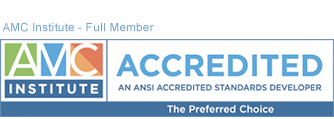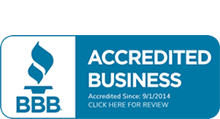Another in a series of articles related to association management selected from our reading list by:
Robert O. Patterson, JD
CEO/ Principal
The Center for Association Resources, Inc.
Why Be On Social Media?
Why should your association be using social media? Because everyone else is: your members, their clients and customers, and most importantly, your competition. At The Center for Association Resources, we have helped numerous client organizations navigate the constant emerging area of social media……could we help your organization?
With half the population of the United States using Facebook (http://www.facebook.com/), odds are high that some of them are interested in your cause, product or mission. Each of them, in turn, has their own network, further increasing your reach. Think of the silly videos that have gone viral: someone shared and asked others to do the same. They shared it with their friends and followers, and so on. Now imagine that’s your call to action or plea for emergency funds.
One of Twitter’s (http://twitter.com/) busiest days (http://en.wikipedia.org/wiki/Twitter) ever was the day Michael Jackson died, when 100,000 tweets per hour about it caused the site’s servers to crash. Word spread like wildfire. The same thing happened last spring during the revolutions in the Arab world. Never has there been a time when news can spread so fast. Imagine if it’s your good news or a request that people contact their legislators about a particular bill. People are literally helping to change the world from their laptops and smart phones.
People are connected and causes are connected. They’re already posting and tweeting about your issues. Shouldn’t you be there to drive the discussion, and, when necessary, correct misstatements, false facts and rumors.
Social media is immediate, thanks to the rapid growth of smart phones (BlackBerrys, Androids and iPhones) and the proliferation of free WiFi, or wireless broadband. More than half the users of both Twitter and Facebook access the sites from their mobile devices, according to their own statistics. That means your communication to your members, clients and customers reaches them 24 hours a day, seven days a week. Long gone are the days of communicating with business colleagues during business hours. In some cases they are accessing social media primarily after hours – at home or on the go.
According to a recent report from the Pew Research Internet and American Life Project, “The Social Media Landscape, (http://pewinternet.org/Presentations/2011/Sept/Social-Media-Landscape.aspx?src=prc-twitter)” 51 percent of all Internet users take part in social networking. For 18- to 29-year olds, it’s 83 percent and 70 percent for those 30 to 49 years old. That’s a large part of your audience. And lest you think social media is just for the young, the same report finds that 51 percent of Internet users 51 to 64 years old use it and 33 percent of those over 65. The last two numbers will only grow as the younger users age and continue to stay connected.
Much of social media had a truly social beginning: younger, mobile users and early adopters saw Facebook and Twitter as a way to find each other, keep up with each other and broaden their circles. And then their parents discovered it. Then savvy businesses saw the benefits. An interesting example of this is Foursquare (https://foursquare.com/), a location-based social networking site. Users on Foursquare check in at their destinations in the hope that friends will find them there. The destinations – bars, restaurants, businesses – in turn have begun rewarding check-ins with specials and discounts. Your members also may establish incentives for checking into events or volunteer activities.
As we discussed in the previous post (link to it), social media should work with your existing marketing efforts. What better way to increase subscribers to your newsletter or blog than tweeting or posting on Facebook link to different articles. The same is true for news releases and news coverage that you have put in your website’s news feed. It is important to keep pointing your followers back to your website, and your original message. As hot as Facebook, Twitter and the other social media sites are right now, the next big thing may be just around the corner, but your message stays the same.
Contact The Center for Association Resources today to learn how many of these exciting strategies can help your organization achieve it’s goals!







